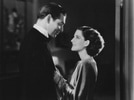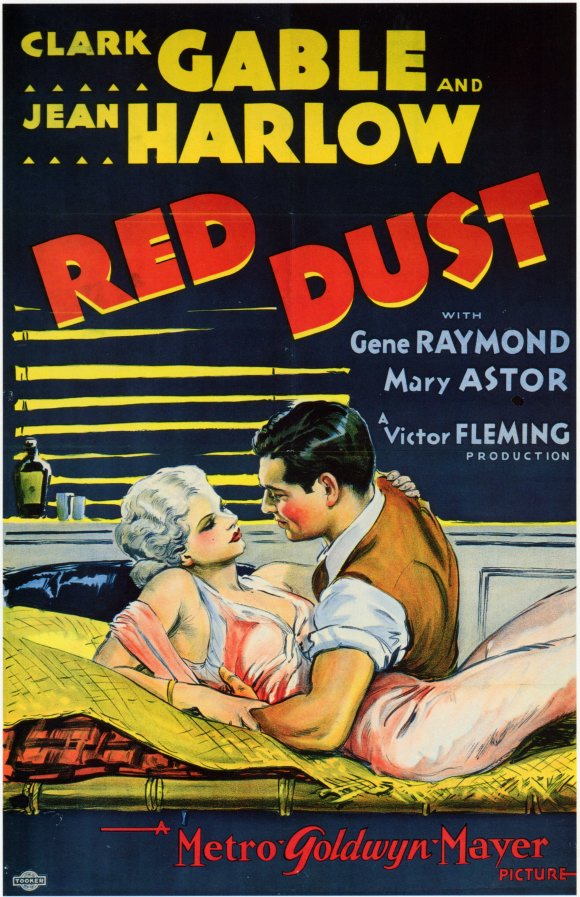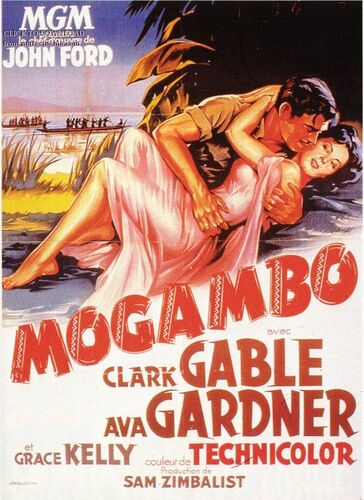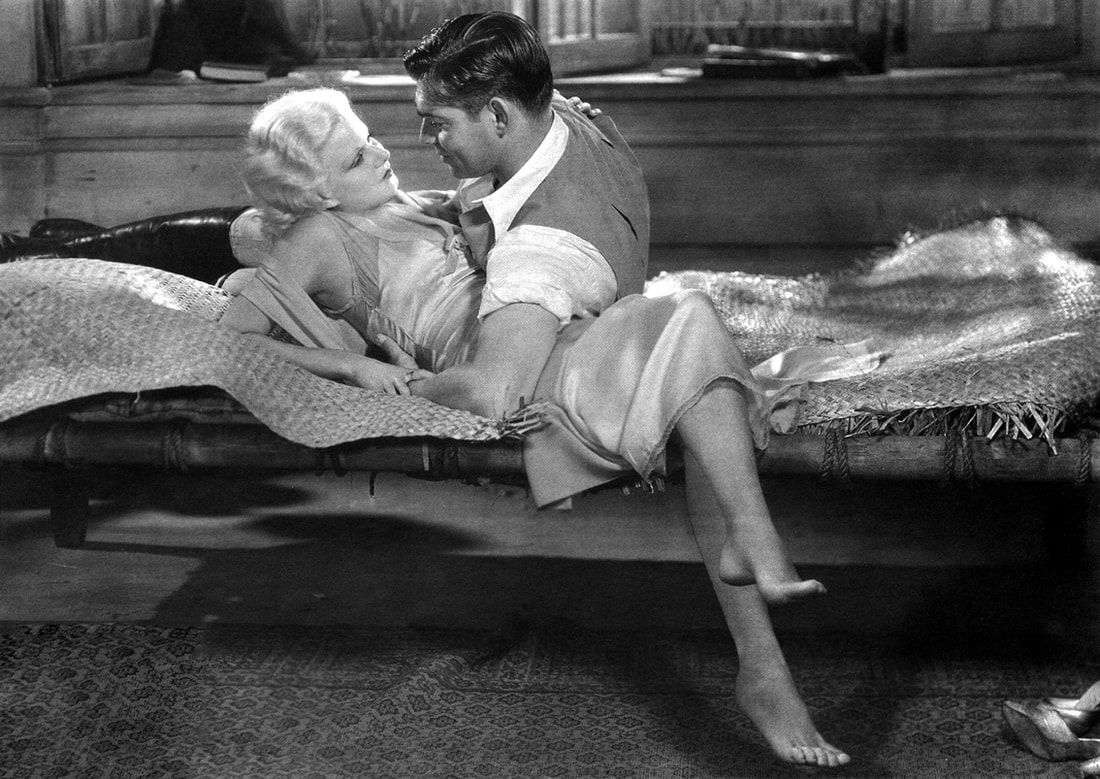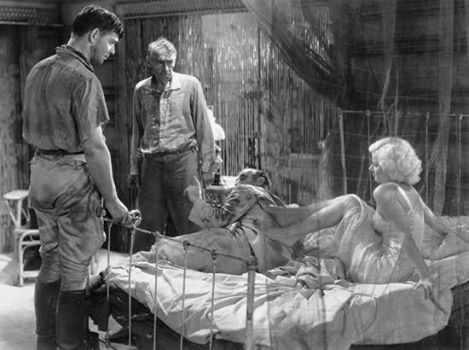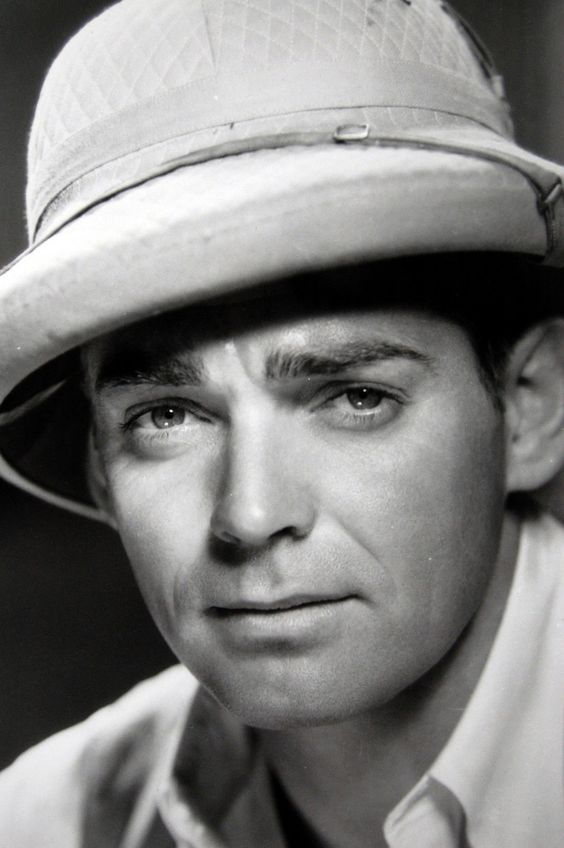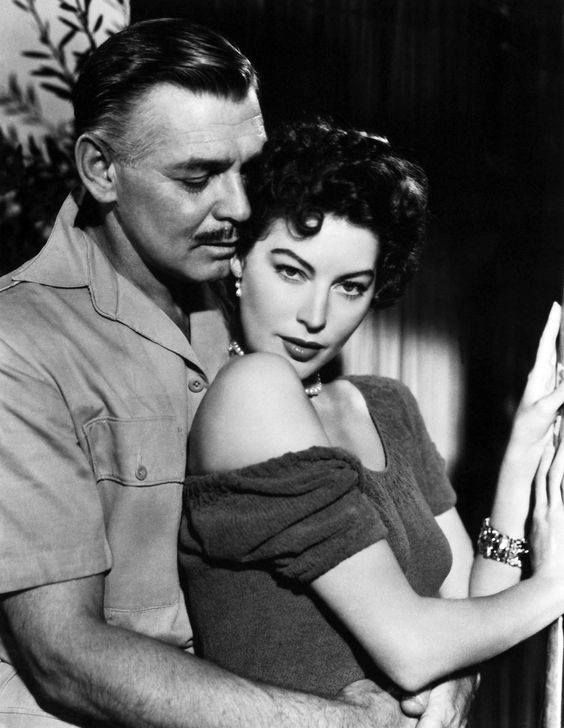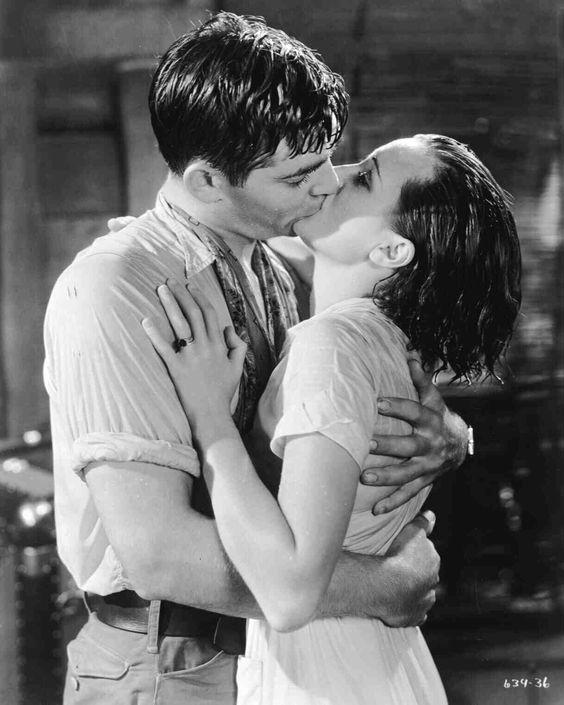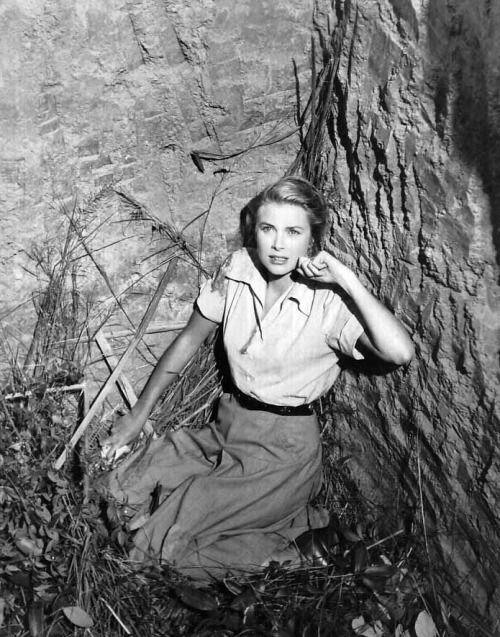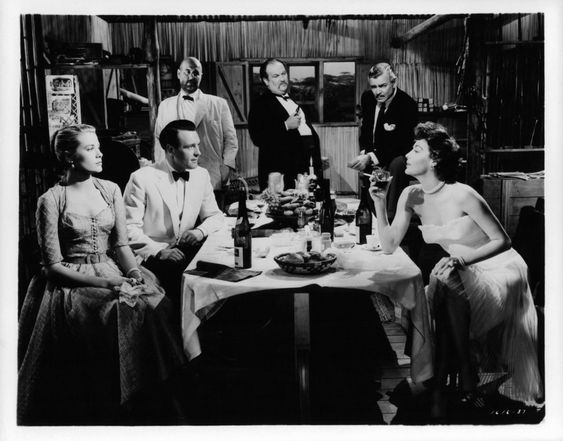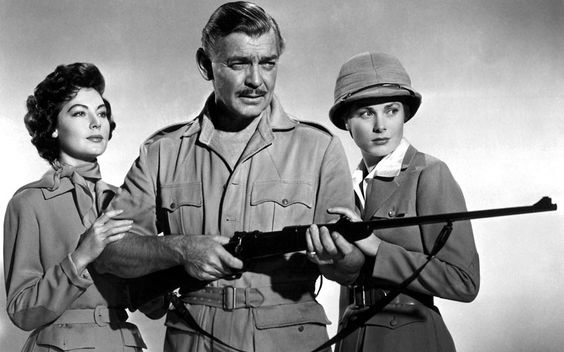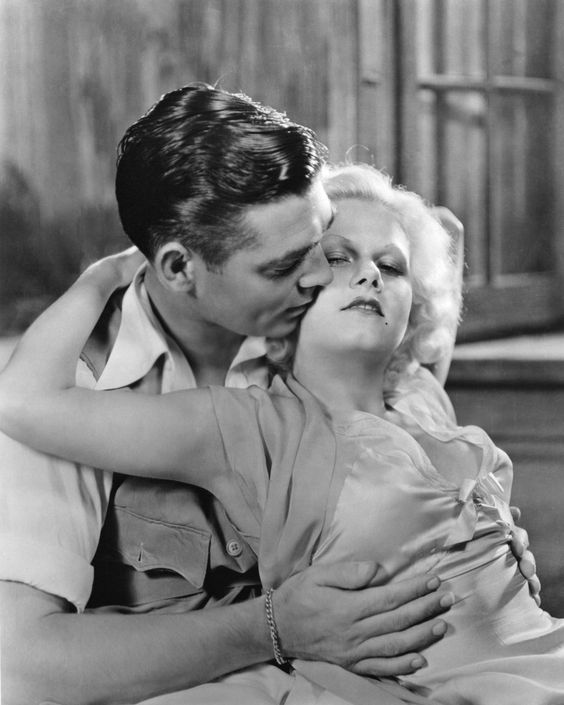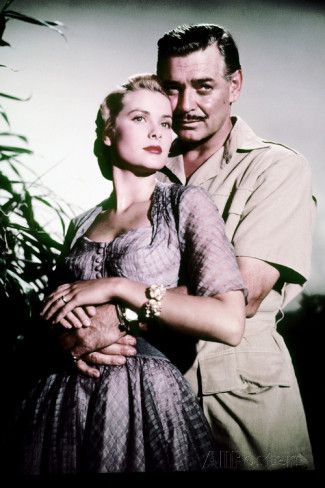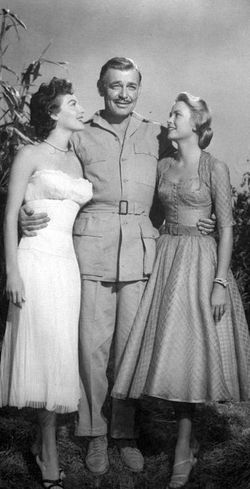|
A Comparison Review of Red Dust ('32) & Mogambo ('53)
Title: Red Dust ('32) Director: Victor Fleming Starring: Clark Gable, Jean Harlow & Mary Astor Studio: MGM My IMDB Rating: 8 Viewing: Warner Archive DVD |
Title: Mogambo ('53) Director: John Ford Starring: Clark Gable, Ava Gardner & Grace Kelly Studio: MGM My IMDB Rating: 7 Viewing: Warner DVD |
Thoughts:
When Red Dust (’32) was made at the height of the Pre-Code era of Hollywood filmmaking, there was little thought given to the on-screen depiction of sex or adultery. Or rather, there was lots of thought about it, but it was placed on screen with little or no filter. Jean Harlow could play a prostitute with a heart of gold, looking for a shining knight to rescue her from a life of debauchery, while Clark Gable could be a gruff plantation owner with little or no concern for bounding from one woman’s bed to another’s. When Mogambo (’53) was made 21 years later, however, sex & sexuality had to be couched in innuendo and subtlety due to the strictly enforced Production Code. Ava Gardner is a playgirl of dubious reputation, but she was no street walker. Gable is still able to move from one woman to the next, however, it is depicted with far less satisfaction & satiation on the part of the women. The simplest way to illustrate the difference between pre-code version & Code version is the famous bathing scene. In Red Dust Harlow frolics in the rain barrel, clearly naked & fully uninhibited, while Gardner calmly showers in Mogambo, politely asking Gable to turn his back, so she can wrap up in a robe. The sexual tension is present in both scenes, but the visual is completely different. At their core, however, both films focus on a love triangle that has its fulcrum the animal magnetism of Clark Gable, but the depiction of and emotional center of the films are quite a bit different, even as they both flaunt adultery & non-marital consensual sex.
When Red Dust (’32) was made at the height of the Pre-Code era of Hollywood filmmaking, there was little thought given to the on-screen depiction of sex or adultery. Or rather, there was lots of thought about it, but it was placed on screen with little or no filter. Jean Harlow could play a prostitute with a heart of gold, looking for a shining knight to rescue her from a life of debauchery, while Clark Gable could be a gruff plantation owner with little or no concern for bounding from one woman’s bed to another’s. When Mogambo (’53) was made 21 years later, however, sex & sexuality had to be couched in innuendo and subtlety due to the strictly enforced Production Code. Ava Gardner is a playgirl of dubious reputation, but she was no street walker. Gable is still able to move from one woman to the next, however, it is depicted with far less satisfaction & satiation on the part of the women. The simplest way to illustrate the difference between pre-code version & Code version is the famous bathing scene. In Red Dust Harlow frolics in the rain barrel, clearly naked & fully uninhibited, while Gardner calmly showers in Mogambo, politely asking Gable to turn his back, so she can wrap up in a robe. The sexual tension is present in both scenes, but the visual is completely different. At their core, however, both films focus on a love triangle that has its fulcrum the animal magnetism of Clark Gable, but the depiction of and emotional center of the films are quite a bit different, even as they both flaunt adultery & non-marital consensual sex.
By placing both films in remote & dangerous locales, Indochina for Red Dust & central Africa for Mogambo, filmmakers Victor Fleming & John Ford, respectively, are able to exploit the exotic to create the illicit love/lust triangle, removing it’s possibilities from civilized society & placing its outrageousness into an animalistic ‘other’ world. Gable is the instigator & center of both triangles; a rugged man’s man, who lives by a rough-hewn code of the wild, taming nature in Red Dust & animals in Mogambo. He brooks no insolence or incompetence, treating the locals poorly & weak assistants with contempt. When a beautiful woman, in the form of Jean Harlow or Ava Gardner is dropped in his world, however, his response is to treat them first with cruelty, then with flirtatious & sexual pursuit. That they are both tough talking women of the world, each with a knowing nod to Gable’s intensions, willingly trading sexual favors and intimacy for comfort and short term happiness. That both women develop sincere feelings for Gable’s gruff individualist is hardly surprising as both films make Gable’s masculinity a focal point of each film, giving him every opportunity to remove his shirt with great regularity.
As both initial relationships develop, there is a convivial feeling conveyed by both Harlow & Gable & Gardner & Gable. They are all equal and while sex is the focus of both relationships, there is also a partnership and equality portrayed that sets both relationships apart from the 3rd leg of the triangle. There is a casual acceptance of the relationship as temporary, but meaningful, albeit on Gable’s terms, even as both women develop deeper feelings. In both films Gable comments that the Harlow/Gardner character is “ok” & ‘one of the guys’, for their understanding of the fundamental nature of the mutually exploitive relationship, puts his expectations in the open. As both women leave, however, there is a break from this sentiment as both women make it clear in their reactions that they don’t want to leave & expect more from Gable. His offer of money to Harlow is a brutal slap in the face & her reaction is one of the best of Harlow’s career. She is emotionally crushed and expresses it so simply on her face that only a heel wouldn’t recognize it, as Gable does not. Similarly, but with less overt cruelty, Gable’s nonchalance at Gardner’s departure also leaves her disappointed, but her reaction is more from anger than disappointment, although it is clear in her gestures that she is also crushed by his indifference. While Harlow’s expectation & response seem to be born of youthful expectations, Gardner’s are clearly the reflection of a world-weariness, the result of too many disappointments over too long a time. Gable’s cruelty seems to be born of ignorance and lack of sentiment as opposed to his being mean spirited, but the effect is cast his character as deficient.
As both initial relationships develop, there is a convivial feeling conveyed by both Harlow & Gable & Gardner & Gable. They are all equal and while sex is the focus of both relationships, there is also a partnership and equality portrayed that sets both relationships apart from the 3rd leg of the triangle. There is a casual acceptance of the relationship as temporary, but meaningful, albeit on Gable’s terms, even as both women develop deeper feelings. In both films Gable comments that the Harlow/Gardner character is “ok” & ‘one of the guys’, for their understanding of the fundamental nature of the mutually exploitive relationship, puts his expectations in the open. As both women leave, however, there is a break from this sentiment as both women make it clear in their reactions that they don’t want to leave & expect more from Gable. His offer of money to Harlow is a brutal slap in the face & her reaction is one of the best of Harlow’s career. She is emotionally crushed and expresses it so simply on her face that only a heel wouldn’t recognize it, as Gable does not. Similarly, but with less overt cruelty, Gable’s nonchalance at Gardner’s departure also leaves her disappointed, but her reaction is more from anger than disappointment, although it is clear in her gestures that she is also crushed by his indifference. While Harlow’s expectation & response seem to be born of youthful expectations, Gardner’s are clearly the reflection of a world-weariness, the result of too many disappointments over too long a time. Gable’s cruelty seems to be born of ignorance and lack of sentiment as opposed to his being mean spirited, but the effect is cast his character as deficient.
The departure of the ‘common’ woman opens the door for the arrival of the ‘cultured’ woman who arrives in both films on the arm of their adventurer husband. Mary Astor, in Red Dust, & Grace Kelly, in Mogambo, represent all that is fine & good about womanhood. They give the appearance of loving & faithful wives who support & cherish their husband’s desire for adventure and danger. Just as in the case of the Harlow/Gardner’s appearance, however, they are met with derision by Gable, as he makes it known they are both unexpected & not necessary. When the husbands in both movies are stricken with a tropical disease it not only reinforces Gable’s masculine superiority, but allows for his softer side to emerge as he cares for the men. In opening up, while proving his virility in not getting sick & appearing weak, Gable is free to passively charm both wives, but not before one last roguish remark that gets him slapped. For Astor, the slap is clearly a sexual turn-on & the first sign that she may be more animal than her prim exterior exposes as the flash across her face as she realizes what she has done is filled with longing. Kelly, on the other hand administers her slap with cool precision, befitting a more buttoned up production code philanderer. In either case it is no surprise when both women surrender to Gables charms because the emotional response is hot blooded & impetuous.
That a stroll through the wild territory surrounding the camps ignites the passion in both Astor & Kelly is no surprise. Both women are frightened into the warm & macho arms of Gable & are helpless to resist his animal magnetism. It’s as if in running from the wild animals has given them permission to retreat into the arms of a somewhat less wild animal. For Astor, the thunderstorm and clothes drenching run through the jungle seem like a cathartic cleansing from the stuffing & dry nature of her marriage. Kelly literally crosses a black cat & is lifted to freedom from her captivity. The illusions are quite obvious, but enjoyable & inevitable nonetheless. Once the husbands are dispatched into the remote wilderness, Gable is able to consummate his conquests unimpeded, with each movie demonstrating the extent of overt sexuality & flaunting of marital conventions allowed during the period of its making. For Red Dust, weeks pass & Astor is seen in bed with a great look of satisfaction on her face, clearly after having enjoyed coitus with Gable over a long period of time. Mogambo must play the physical part of the relationship more cooly, but its portrayal befits Kelly’s more mannered performance style.
While lust & love are set against each other in the relationships with the good time girls (lust) & the cultured ladies (love), it is interesting that in both cases lust is allowed to ultimately evolve into love and triumph. When the Harlow/Gardner character returns to the outpost, having been foiled in leaving by a broken down boat, the triangle becomes complete, but lust has been replaced. Both Harlow & Gardner harbor their love while Gable moves through his affairs with the married women, confiding in both that he loves both Astor & Kelly. That the good time girls are relegated to the side opens both women to expand their characters & their performances, both giving them depth, while they crumble inside. Harlow’s performance, much like her off screen personality, is a buoyant and smart portrayal of a woman who has used men as much as she has been used. Gardner’s performance, on the other hand, is calmer, more mature & shows the depth of her ability as an actress. It is world-weary, but more knowing than Harlow’s, more subtle & more nakedly exposed. That both women were going through difficult experiences while each film was being made (Harlow over the death/suicide of her husband Paul Bern & Gardner dealing with pregnancy & abortion while married to Frank Sinatra) is a testament to the strength they brought to their roles.
That a stroll through the wild territory surrounding the camps ignites the passion in both Astor & Kelly is no surprise. Both women are frightened into the warm & macho arms of Gable & are helpless to resist his animal magnetism. It’s as if in running from the wild animals has given them permission to retreat into the arms of a somewhat less wild animal. For Astor, the thunderstorm and clothes drenching run through the jungle seem like a cathartic cleansing from the stuffing & dry nature of her marriage. Kelly literally crosses a black cat & is lifted to freedom from her captivity. The illusions are quite obvious, but enjoyable & inevitable nonetheless. Once the husbands are dispatched into the remote wilderness, Gable is able to consummate his conquests unimpeded, with each movie demonstrating the extent of overt sexuality & flaunting of marital conventions allowed during the period of its making. For Red Dust, weeks pass & Astor is seen in bed with a great look of satisfaction on her face, clearly after having enjoyed coitus with Gable over a long period of time. Mogambo must play the physical part of the relationship more cooly, but its portrayal befits Kelly’s more mannered performance style.
While lust & love are set against each other in the relationships with the good time girls (lust) & the cultured ladies (love), it is interesting that in both cases lust is allowed to ultimately evolve into love and triumph. When the Harlow/Gardner character returns to the outpost, having been foiled in leaving by a broken down boat, the triangle becomes complete, but lust has been replaced. Both Harlow & Gardner harbor their love while Gable moves through his affairs with the married women, confiding in both that he loves both Astor & Kelly. That the good time girls are relegated to the side opens both women to expand their characters & their performances, both giving them depth, while they crumble inside. Harlow’s performance, much like her off screen personality, is a buoyant and smart portrayal of a woman who has used men as much as she has been used. Gardner’s performance, on the other hand, is calmer, more mature & shows the depth of her ability as an actress. It is world-weary, but more knowing than Harlow’s, more subtle & more nakedly exposed. That both women were going through difficult experiences while each film was being made (Harlow over the death/suicide of her husband Paul Bern & Gardner dealing with pregnancy & abortion while married to Frank Sinatra) is a testament to the strength they brought to their roles.
The resolution of each triangle is left in the hands of Gable in both movies. That the choice is presented as being between nobility & caddishness belies the fundamental reality that he has wantonly interceded in a marriage in each story. For a pre-code era film, like Red Dust, this would not be surprising, as infidelity, pre- & extra marital sex & multiple partners were more the norm than the exception in the freewheeling period before the enforcement of the production code. For Mogambo, made in the early twilight of the studio era, to prescribe no punishment for Gable’s character, aside for a minor flesh wound, was certainly outside the norm, but perhaps speaks to Gable’s long earned rakishness in many of his films. In both films lust has been replaced by love; the classes have been aligned in each couple & there are happy endings for all involved.
Sources:
Pre-Code Hollywood: Sex, Immorality, & Insurection in American Cinema 1930-1934. Thomas Doherty. Columbia University Press. 1999.
Ava Gardner: Love is Nothing. Lee Server. St. Martin’s Press. 2006
Bombshell: The Life & Death of Jean Harlow. David Stenn. Doubleday Publishers. 1993.
Print the Legend: The Life & Times of John Ford. Scott Eyman. Simon & Schuster. 1999.
Sources:
Pre-Code Hollywood: Sex, Immorality, & Insurection in American Cinema 1930-1934. Thomas Doherty. Columbia University Press. 1999.
Ava Gardner: Love is Nothing. Lee Server. St. Martin’s Press. 2006
Bombshell: The Life & Death of Jean Harlow. David Stenn. Doubleday Publishers. 1993.
Print the Legend: The Life & Times of John Ford. Scott Eyman. Simon & Schuster. 1999.
